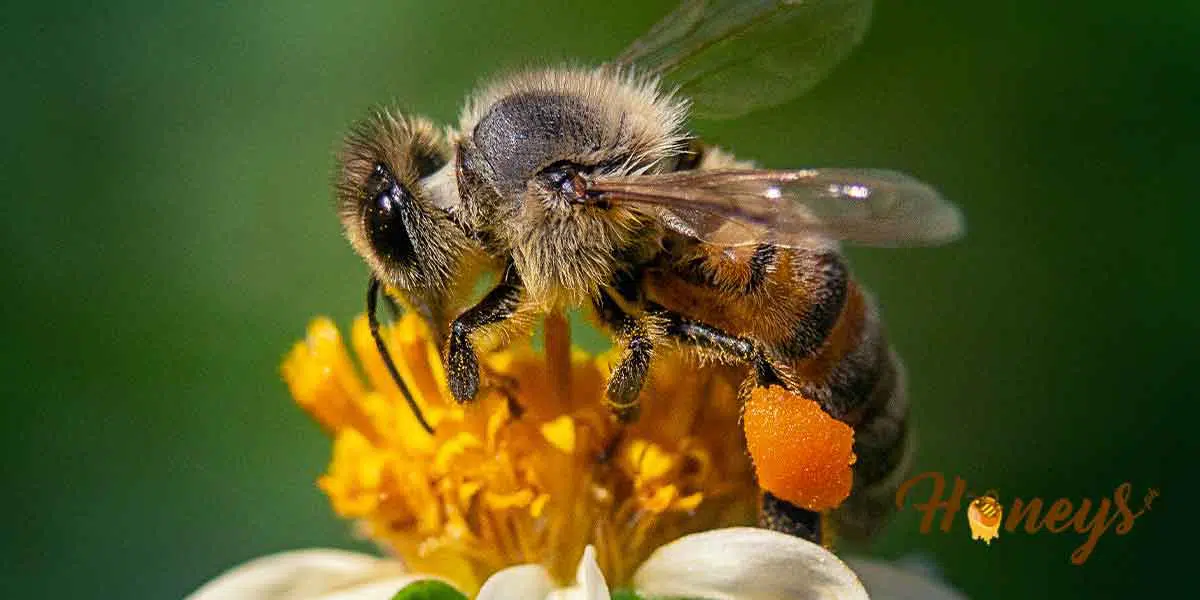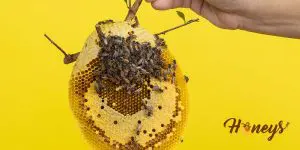
A Bee-autiful Creature
Popularly these awesome creatures are known to make honey. But many people did not know much more about them. This article mesmerizes you to a better knowledge of the all-about of these insects. So let’s BEE-hold what these insects are, what they have, what they do, and how they influence our lives. So let’s bee-gin and tackle some facts about bees.
Bee Anatomy
Like all insects, the bee body is composed of a head with two antennae, an abdomen, and a thorax with six legs. Bees have two pairs of wings and branched hairs scattered on their bodies. Bees have stingers as a mode of protection, but only the female bees are armed with those. These insects come in different colors including red, blue, black, and green. Some are solid, stripped and others possess a metallic sheen.
The bee’s head features a tiny brain, two large compound eyes, and three simple eyes and can see all colors except the color red, bee tongue or proboscis, mandible, and antennae. The thorax serves as the base where the legs and wings are attached while the abdomen contains the wax glands, stinger, reproductive organs, and hairs hovering over the body which is the exoskeleton. The exoskeleton is the external skeleton of the bees for protection which is covered in a layer of hairs that are used for pollen gathering and body temperature regulation. The bees’ antennae serve as a sensory powerhouse that functions for the sense of smell, taste, touch, and hearing. They have no ears and mainly rely on those antennae.
Another feature of the bee is the pollen basket which is in the bee’s hind legs where pollen is being gathered. Worker bees have wax-producing glands located at the under of the abdomen.
Now you know how bees are incredibly made of.
Furthermore, there is a huge economic importance of honey bees. These creatures get their biggest contribution as pollinators of a vast number of plants that make almost all of the world’s food. Hence the world’s food production depends on them.
Bee Range
Not all bees are the same. Bees come in different sizes from large species of carpenter bees and bumblebees to smaller Perdita minima bee which is just less than 2 millimeters. Globally, the bee-known species count to about 20,000. Among them, the famous one is the honeybee. Bees in colonies that contain the queen, workers, and drones. Different species live in ecosystems from forests, deserts, and grasslands. They range in size from tiny, 2 mm in length to larger species up to 4cm long. Honeybees are species kept by beekeepers in managed hives for commercial and agricultural purposes. Other bees are wild including the bumblebee species and many types of solitary bees.
Types, Races, and Species of Bees:
Bees commonly live in different types of communities called colonies. There are 3 different types of them that live all together – the queen bee, the worker bee (female and infertile), and the drone bee (male).
Queen Bee’s Role
Her main and only function is for reproduction, which is to lay eggs for her life span. The queen is capable of laying as many as 2, 000 eggs each day. Her life span reaches up to 5 years, but on average is 2 to 3 years. They produce what is called a queen substance. It is a chemical pheromone that is passed from bee to bee throughout the entire colony as they share food.
Worker Bee’s Role
They are the smallest of the bees but so the most numerous of their types. They are all females that are incapable of reproduction. However, they may lay unfertilized eggs which develop into male bees called drones. Female worker bees functions include secretion of wax used in hives and form it into honeycombs, foraging for pollen and nectar that is transformed into honey, production of food called royal jelly for the younger larvae, and the bee queen, defense of the hive against intruders, and maintenance of optimal conditions of the hive. Worker bees have well-developed compound eyes and well-developed tongues to gather nectar. Their lifespan ranges from 5 to 6 weeks. They are also called field bees.
Drone Bee’s Role
Drones are male honey bees whose only function is to fertilize and mate the queen bee. Their characteristics include: They have larger bodies compared to worker bees. This group has large distinctive eyes and longer antennae compared to that of the queen bee and worker bee. They are from developed unfertilized eggs. And also, they don’t produce wax, brood, or forage for nectar and pollen. Their life cycle relies on periods of eating, resting, and mating.
Races of Honey Bees
There are around 2,000 species of bees being described globally. However, numerous races of Honey bees have been recognized due to their impact on many cultures worldwide.
Honey Bees (Apis mellifera)
Let’s tackle the honey bees first. The most studied and the most familiar of the bee family are the honey bees. They live in large families and are in abundance all around the world. And also they are the only social insect that can survive longer because of their behavior. The honey bees huddle together and eat honey to withstand cold seasons. They pollinate many species of crops worldwide. They are one-time stingers because their stingers tear off once being used.
Bumble Bees
They are considered to be beneficial bees as they are pollinators of plants and crops. They are large and robust with yellow and black hairs on their abdomens. Their diet is obtained mostly from flowers. They produce honey too but in smaller amounts. They are not as aggressive as honey bees or as many as them. Their nests are on the ground. Their nests also contain the queen, worker, and drone bees.
Carpenter Bees
Carpenters bees have 500 species worldwide. This type of bee is varied in size and color. They are solitary insects. They have the ability to drill through woods and from that they got their name. Since they are not barbed bees so they have the ability to repeat stinging. They also forage for food and pollinate crops. They have been an issue for dwelling in houses and other buildings.
Killer Bees or Africanized Killer Bees
Killer bees are just the same as ordinary honey bees though their wingspan is different. They attack in larger numbers that’s why they pose a great danger to people who are allergic to bee stings. Although they are barbed stingers hence sting only once. Their aggressive behavior makes them infamous. They readily attack once their nests are being disturbed.
Sweat Bees
These few species of bees come from the Halictidae Family. They are called the halictid bees. These bees are relatively small with a metallic color often shiny green. Their diet comes from nectar and pollen. They are bothersome to humans also because they are greatly attracted to perspiration. Their sting is mildly painful. The pollen loads are found on their hind legs when they carry them on their way back to their nest.
Are you enthralled by the facts about bees? There is still a lot to learn about them. These fantastic creatures really are magical. You’ve got to know them better.
In addition to this, did you know that you can eat honeycomb? Surprisingly, there are lots of nutritional value and health benefits of honeycomb. Consuming it may improve your immune system, and promote a healthy heart and liver.







